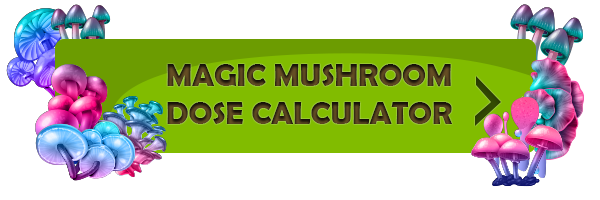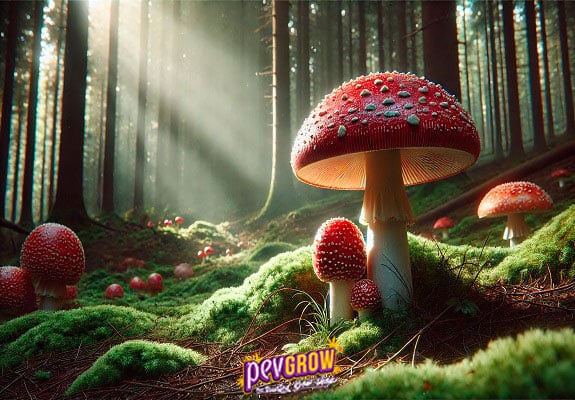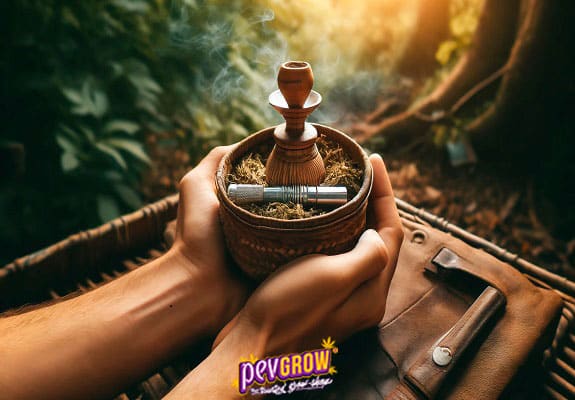

25-02-2020 10:00:20 - Updated: 25 February, 2020
There is a certain mystery surrounding the growing of mushrooms and magic truffles, until fairly recently it was not known how the mushrooms developed, but research has revealed all the unknowns hidden in the mycelium, the essential part of their growth. Do you want to discover them? In this article you have the answers.
⭐ Definition of Mycelium
The definition of mycelium would be something like the root and digestive system of mushrooms. It consists of countless groups of hyphae and it can be said that it constitutes the vegetative growth part of the fungi. Mycelium can develop in a matter of minutes, the appropriate conditions in a soil are sufficient for it to spread rapidly.
Mycelium is present in many types of soils, all over the world and of many different sizes. A interesting fact is that a specimen of almost 1500 hectares and more than 2000 years old was found in eastern Oregon, being the most extensive found to date.
⛳ Hyphae and Mycelium
Hyphae are the branches that form the sprouting spores, a kind of filaments or roots that serve to provide food to the fungus. Just as plants develop the root system to seek moisture and nutrients, hyphae grow through the substrate creating a network structure, until they find food from trees, insects and rotting plants.
Hyphae represent all the vital part of the fungi during the vegetative stage, and when several hyphae join together a rhizomorph or micellar strand is formed. The whole set of rhizomorphs constitute the mycelium of the fungus.
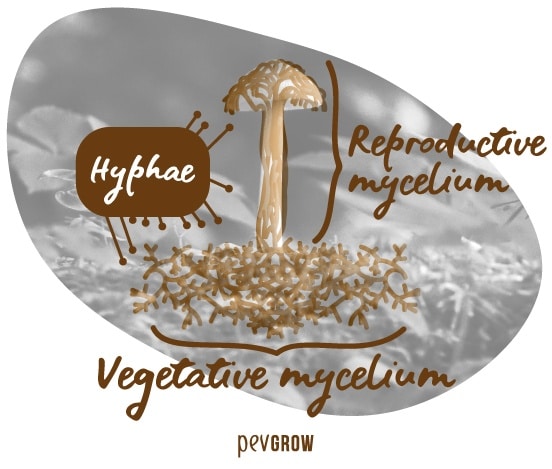
✨ How is Mycelium formed?
The mycelium we see is usually the secondary mycelium, and it is called dicariotic since each cell contains two distinct nuclei. It differs from the primary or monocaryotic mycelium because the latter has only one nucleus, and is the first to be formed when fungal spores find a suitable habitat for their development.
When spores germinate in a medium they form monocaryotic mycelium and cannot reproduce sexually. When two compatible primary myceliums come into contact, the secondary or dicaryotic mycelium is created, which can be fruitful, that is, produce mushrooms or sclerotia.
🚀 What is its function?
It basically takes care of absorbing food in an osmotic way. Hyphae of the mycelium penetrate the substrate and secrete an enzyme that decomposes matter to assimilate its nutrients. When matter is not decomposed it is in the form of indigestible polymers, but the enzymes dissolve these polymers, making them into easily assimilated monomers.
✅ How to make homemade Mycelium?
To obtain mycelium, the fungus spores must be germinated in a suitable, previously sterilized substrate. It is important that it is kept without light and with the ideal temperature and humidity for its development. This phase is very delicate, especially if we work directly with the spores, and there is a high risk of contamination by other types of fungi, bacteria and insects.
There are many different types of substrate for growing mushrooms, such as cereal grains, wood sawdust, pellets, straw, cardboard, compost, agar gel, coffee grounds, rice or water with honey among others.
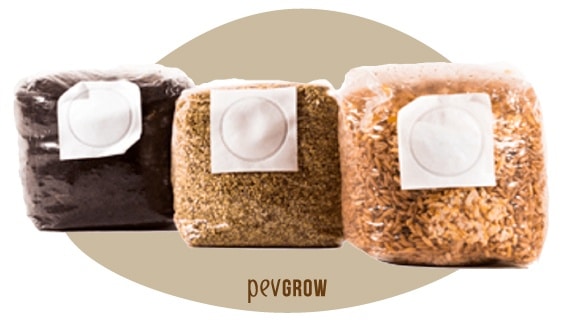
🔥 What is the best substrate for its growth?
There is a mixture of substrate for growing mushrooms that is more effective than the others, and is also easy to obtain, cheap and almost infallible, known as the PF-Tek technique (Psilocybe Fanaticus technique).
This method consists of filling airtight glass jars with a mixture of 4 US liq oz (120 ml) vermiculite, 2 US liq oz (60 ml) brown rice flour and 2 US liq oz (60 ml) water, and it was invented by Robert McPherson (Psilocybe Fanaticus).
Ideally, the mixture should be prepared in a large container and then fill the jars with the proportion indicated above. I am going to explain you the steps.
- Pour the corresponding amount of vermiculite into the recipient.
- Add water slowly and stir to moisten the vermiculite (Wet without soaking, just moisten).
- Add the brown rice flour slowly.
- Stir all the mixture to make it as homogeneous as possible, it has to be loose, not caked.
- Gradually fill the jars with the mixture, almost to the top and without crushing.
- Add a layer of vermiculite on top to act as a biological filter.
- Clean the edges of the jar well with the help of paper and alcohol.
- Prepare aluminum foil and rubber bands or adhesive tape to act as the lid of the jar. Ideally, place 2 layers of paper, secure them with rubber bands or tape. This will act as a fixed cap and they will be the ones we pierce with the syringe needle in order to inoculate the spores. Then, place those 2 layers of aluminum and hold them down, cover them with another layer of aluminum foil, so that this third layer can be easily removed when necessary.
🎯 Substrate sterilization
Once the substrate mixture is prepared in your pot, the next step is to sterilize the substrate where the mycelium will develop, and we will need a large pot with a lid. Sterilization is a very important step in the process of growing mushrooms, with it we will prevent other pathogens can contaminate our growth environment. It has to be properly done, so I’m going to explain it to you step by step:
- Insert a rack or the original lids of the glass jars so that they do not touch the bottom of the pot and risk bursting from the temperature.
- Place the jars inside the pot, on top of the rack or lids.
- Fill the pot with water until it almost covers the jars (0.4 or 0.8 inches (1 or 2 centimeters) away from the top edge).
- Heat the water until it starts to cook.
- Cook slowly for at least 1 and a half hour, not too hard, and check from time to time to make sure the water does not evaporate.
- Turn off the fire and let it cool down for several hours before removing the jars.
- Remove the sterilized jars already prepared for spore inoculation and incubation.
👾 Inoculation of spores into the substrate
The timing of injecting the fungus spores into the substrate is one of the most critical in the cultivation of mushrooms or magic truffles. It is very important that all the utensils, our hands and the environment are clean and disinfected, to do so it is necessary to wash everything with alcohol and put on a mask to not breathe on the jars.
For this step we have to have the syringe ready with the spores of the varieties we like the most, in our grow shop you have some of the best in the world. The idea is to introduce the spores into the substrate carefully, 0.07 tablespoon (1 ml) is enough to inoculate a 8.5 US liq oz (250 ml) jar, but if we put 0.14 tablespoon (2 ml) per jar the colonization will be faster. I will explain it step by step:
- When you have the spore-filled syringe ready, burn the tip of the needle with a lighter until it becomes red-hot, and wait a while for it to cool.
- Carefully remove the last layer of aluminum foil from the lid, leaving the other 2.
- Carefully insert the needle into the jar at one corner, passing through the 2 layers of aluminium foil that serve as the lid, until it reaches the bottom of the needle.
- Press to make a drop come out and keep pressing slowly while you take out the syringe so that the content is spread over the substrate.
- This process will have to be repeated in the other corners and the center of the jar, remember that between the 5 inoculations per jar it is enough to put 0.07 to 0.14 US liq oz (1 to 2 ml) of spores but, mind you, reheat the needle every time you go to inoculate, it’s very important.
- When we have inoculated the spores, we take the aluminium layer that we had removed and put it back on, we have our substrate inoculated with the spores and prepared for incubation.
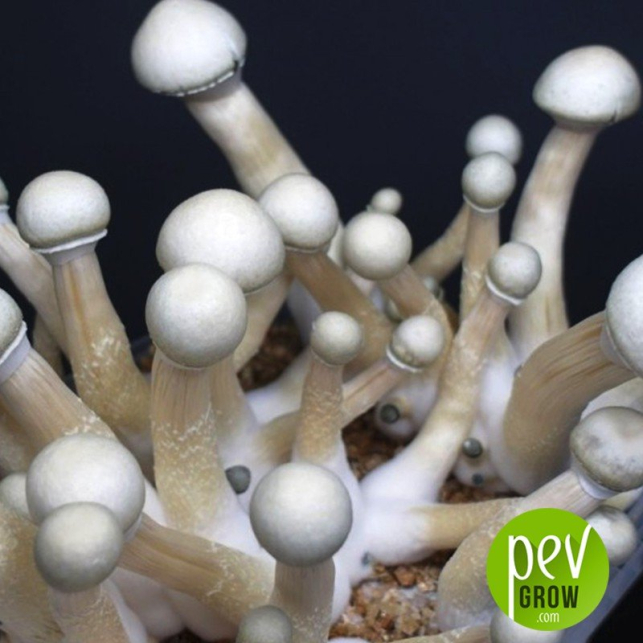
Moby Dick is one of the most modern varieties of Psilocybe Cubensis, resulting from the selection work and cross between the Psilocybe A+ and the Golden Teacher….
Tupper with 0.3 US gal (1,200 ml) of sterilised rye substrate colonised with Moby Dick strain
Air filter bag for growing
2 clips or tweezers to close the bag
Mushroom growing instructions
🧐 How to grow Mycelium, incubation
This part is quite simple, just leave our substrate jar with the spores inoculated in a dark place with a temperature between 75 and 81 ºF (24-27 ºC). After 1 week you can see perfectly the formation of the mycelium, which starts from the spots where spores were inoculated to develop the first hyphae.
Depending on the environmental conditions and other factors, total colonization of the substrate by the mycelium may take up to one month. Ideally, the jar should be checked from time to time, first in case we see signs of contamination to remove it as soon as possible, but also for when we see that the whole outside of the jar has been colonized, to wait one more week so that the center also looks good.
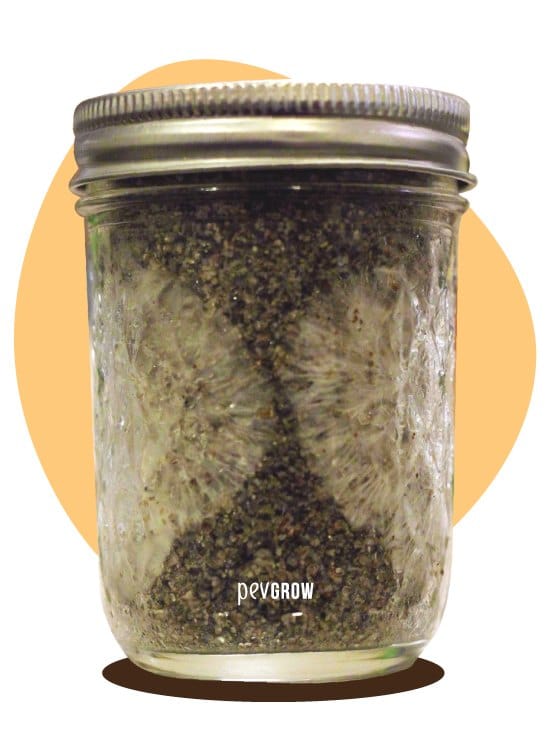
🎬 Mycelium Contamination
The nightmare of every magic or edible mushrooms grower is mycelial contamination. This happens for several reasons, a bad disinfection of the jars, environment or work utensils is the most common, so we insist that everything must be as sterile as possible.
There are several reasons why mycelium can become contaminated, due to other fungi, bacteria or insect pests. When the mycelium becomes contaminated, we must act quickly and discard it as soon as possible, so that it does not continue to spread, and disinfect everything very well to start over again.
Contamination can be detected in several ways, the most common being rare colors in the mycelium. You can also notice strange aromas, another unmistakable sign, and until you get the hang of it it happens quite often. If you have any suspicion that your mycelium has become contaminated throw it away, do not consume those mushrooms under any circumstances and if you want to see how to identify a contaminated mushroom crop easily do not miss this article.
– Differentiate between magic mushrooms and magic truffles
– Excess or lack of potassium in marijuana
– How to identify a contaminated mushroom crop
– The plague of black flies in marijuana
⚠️ Conclusion
Mycelium is the fungus itself and when it is well formed it produces fruit as mushrooms, but it is a rather delicate body, so we have to be as clean and methodical as possible if we want to create it ourselves. That’s why many people prefer to buy magic mushroom kits that have everything already prepared and, given the price they cost, they’re really worth it. If you liked the article or think someone can learn something from it, please share it. It doesn’t cost you anything and can be helpful to someone else.

